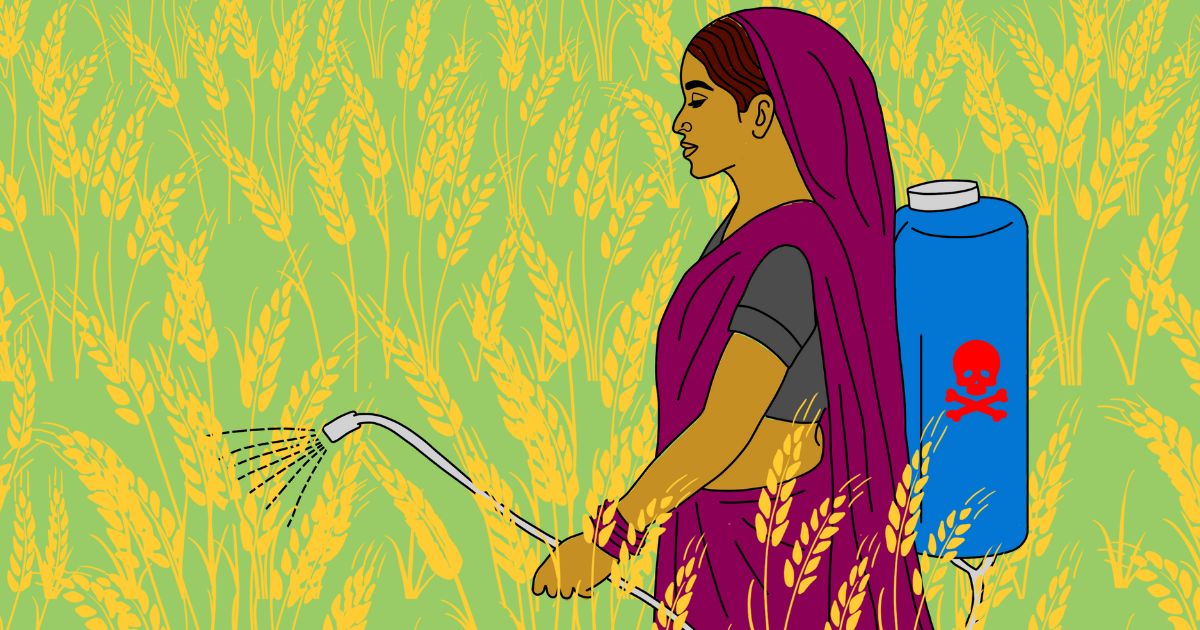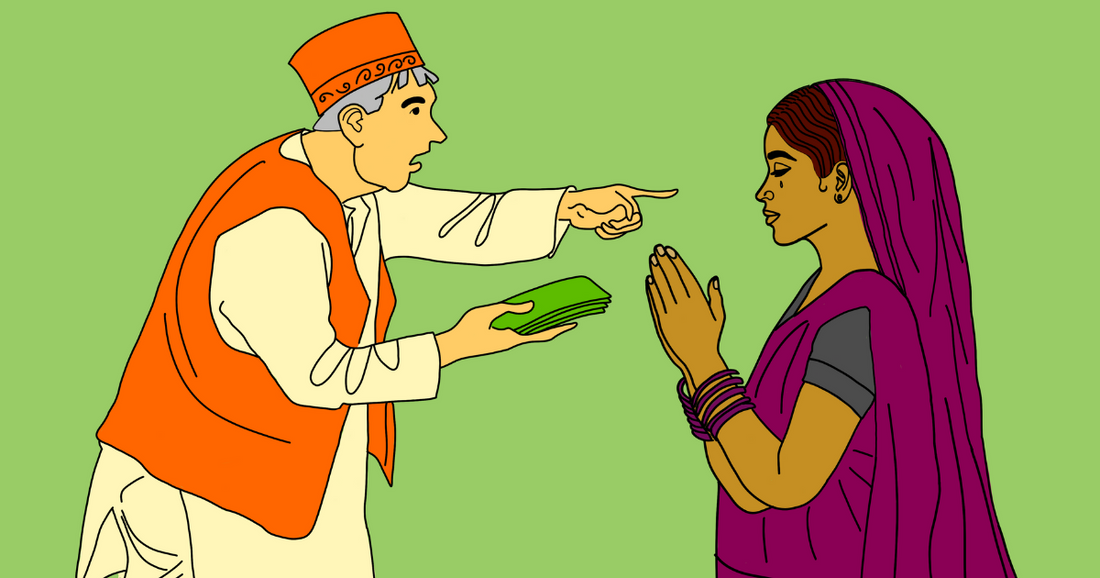On the advice of her friends, Mira Bai had switched to the new wheat-soy cropping cycle. This change was driven by what she observed around her. It was the large farmers in the villages close by who first made the shift. These landholders, with better access to government programmes, subsidised credit, groundwater, and market connections, could afford to bet on newer, high-yielding varieties. Mira Bai and her friends followed their lead, moving away from the hardy millets, pulses and cotton had grown for years. She had known those crops well, using homemade pest remedies, farmyard manure and needing little by way of external inputs. But wheat, soy and the new seeds for even the crops she had been growing for years were different; with the promise of higher yields, new pests, and new requirements, came a growing sense of uncertainty.
At first, she and her friends sought advice from the Gram Sewak from the Block Development office, posted in her region to serve the cluster of villages. They were guided, by an imperious extension worker, on fertiliser use, pesticide schedules, and the right time to spray. But as the 1990s progressed, those visits became less frequent. In the late 90s, the extension worker stopped coming altogether, and Mira Bai found herself with more questions than answers.
This was also the time when she began noticing many new shops selling pesticides, the new seeds and fertilisers opening up. She observed young men on motorcycles visiting her village. They were not from the government. These were company marketing agents, employed by pesticide firms, offering quick-fix advice on how to protect crops. They did not sell the products directly but operated as roaming ‘crop doctors’, mostly targeting large farmers, for they had purchasing power. Mira Bai would watch them make rounds of the bigger farms, eager to advise on what ‘dawai’ or medicine to use. The success of a prominent farmer’s crop after using a certain chemical became a talking point, and soon enough, other farmers followed suit. Mira Bai too was swayed. If the farmers with the biggest harvests were spraying these medicines, surely they must work. Companies understood this dynamic well. They tasked their agents with winning over influential farmers, knowing full well that smaller farmers like Mira Bai would emulate them. The companies of course also had tie ups with the owners of the shops selling the chemicals and seeds.
The agent, hailing from a nearby town, spoke the same idiom and understood the rhythms of village life. Willing to listen, he stood in sharp contrast to non-communicative state officials. For Mira Bai and many others, he quickly filled the knowledge gap left by the withdrawal of public extension services. In fact she looked forward to his visits. He inspected her fields, ‘diagnosed’ the crops, and prescribed what seemed like expert advice. Armed with these prescriptions, Mira Bai would visit the village pesticide dealer, who also lent her money and who bought her produce. He would quickly pull down a few bottles from the shelf, often cheaper products of regional companies with higher profit margins. She bought them without hesitation, unaware that each pesticide was registered for specific crops and pests. No one told her that misapplication could be ineffective or even harmful.
The labels on the bottles were not much help either. Printed in English or technical jargon, with fine print and colour-coded hazard warnings, they were beyond her comprehension. She could not distinguish between the varying levels of toxicity marked by skull-and-crossbones symbols on the packaging. There had been no demonstrations or village-level trainings on the right use of these toxic chemicals. Unlike the bigger farmers who could hire labourers, Mira Bai had to spray her fields herself. She had no protective gear, no gloves, masks, or proper clothing. She mixed the chemicals with her bare hands, tied a loose cloth over her face, and sprayed without considering wind direction or exposure. What she was doing was dangerous for herself, her crops, and her family.
By the time she realised that spraying chemicals brought its own health risks, it was too late to turn back. Dizziness, skin irritation, and persistent coughing became common after spraying. Her farm, once lively with buzzing bees, earthworms, and birds, now was becomingly increasingly bereft of life. But skipping the sprays seemed riskier. For with each passing year, the pests seemed to grow stronger, and she had no choice but to apply higher doses of what the dealer promised were even stronger pesticides. With no fallback income and rising debts from ever-increasing spends on inputs, Mira Bai pressed on, relying on wheat and soy season after season.In the absence of knowledge and support, she became part of a quiet yet debilitating shift sweeping through smallholder farming. Her decisions were no longer rooted in experience but were shaped by a complex mix of market forces and long-standing local power, pushing her to the brink of despair.
Our partners and we recognized the harm that this dependence on synthetic pesticides especially in the context of interlocked markets, was doing to thousands of smallholder farmers like Mira bai. The story of how Mira Bai and her friends found their way back to more sustainable farming is one we will narrate next!
See you around…



